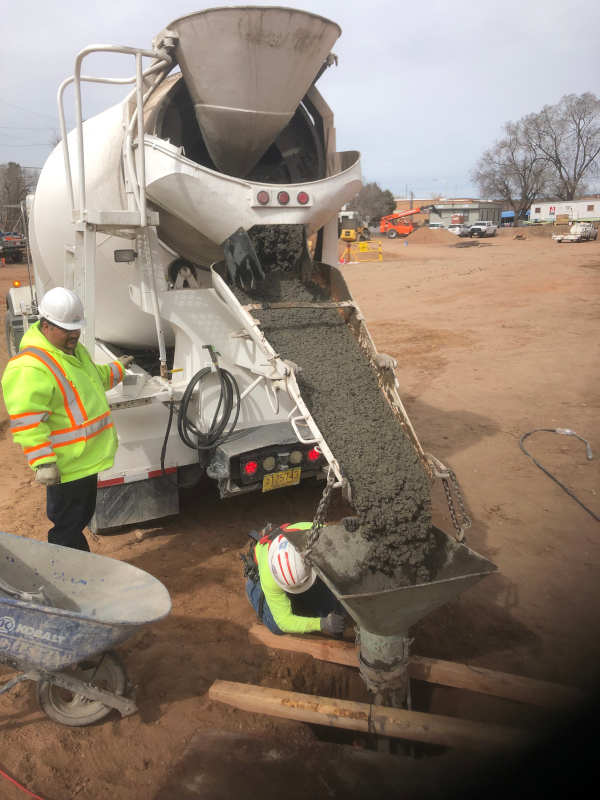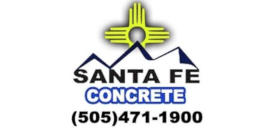Hot Weather Concrete Tips, Strategies and Interesting Facts
- admin
- Aug-01-2019
- Hot Weather Concrete Pours Tips
Concrete hot weather is a selection of conditions that can negatively impact newly mixed or hardened concrete from rapid wetness reduction and rapid cement hydration loss which results in negative outcomes. Featured here are a set  of those described conditions:
of those described conditions:
- Solar Radiation
- High Rates of Wind Speed
- Low Relative Humidity
- High Concrete Temperature
- High Ambient Temperature
It makes sense that concrete hot weather issues happen most often during the summer. However, concrete hot weather issues caused by big wind, solar radiation and low humidity can and do happen all year long, particularly in super dry climates and super humid climates. When there are super-hot weather conditions there most likely be accelerated loss of moisture from concrete just poured which will speed up its how quickly it sets. However, when it’s super-hot weather out, if its humid as well, the humidity will offset the impact of the hot weather temperatures.
Factoring in the Impact of Hot Weather on Newly Poured Concrete
It makes perfect sense to look at the impact hot weather has on concrete when developing a plan for any major concrete pour because it may have a negative consequence on the final quality of the slab. When it’s hot out it translates into a higher water requirement which will raise the water to cement ratio for materials and potentially reduce the quality of the cement with respect to reduced hardiness and resilience. It is a fact that when it’s hot out it increases slump loss rates and it may cost a reduction in the concrete’s entrained air. Concrete setting time is impacted by outdoor temperatures. Since the advent of concrete when its hot outside concrete sets up faster and completing finishing must be speeded up dramatically before the slab is lost because it wasn’t finished correctly. Concrete cured in hot weather temperature is not as strong as concrete cured in lower temperature. Ideally concrete should be poured and cured around 70 degrees Fahrenheit. Weather conditions affecting newly poured concrete include low relative humidity, high super-hot weather temperatures and super-high wind velocity. These weather conditions affect freshly poured concrete negatively by speeding up its evaporation which may end up in plastic shrinkage, prior to it setting up, it may cause early slab life cracking, drying and shrinking. When evaporation of the surface water on newly poured concrete occurs, it removes the hydration needed for it to cure properly. When surface water is in danger of evaporation quickly curing strategies to control it and slow it down need to be enacted. When newly poured concrete slabs or walls are poured during the day when there’s hot weather temperatures, if it cools off quickly during the night, thermal cracking of the concrete may occur. Thermal cracking in thick concrete sections may occur if high temperatures cause newly poured cement rapid hydration.
Successful Hot Weather Concrete
Concrete slabs and walls can be created well if the following steps and factors are taken into consideration:
- Take into consideration all physical conditions that can impact successful concrete
- Create a plan that reduces and manages the negative impact of those physical conditions
- Employ known successful local strategies used for ratios of concrete mixture make-up and amounts like using admixtures that lower water needs and slow down concrete set times.
- Employ admixtures to slow down set times for higher temperatures and long delivery time loads.
- Reduce heat generation in cement hydration by adjusting concrete mixtures.
- Employ ASTM Type II moderate heat cement, including blending cements with lower heat options
- Employ fly ash and slag cement to lower possible issues from high concrete temperature.
- Plan concrete delivery schedules to optimized delivery time and stop disruptions and slow down pouring and finishing
- Work out truck concrete pour times and job site readiness so it occurs as soon as trucks show up on job sites with needed personnel on hand to deal with concrete pouring and finishing.
- Do not pour and finish concrete during weather reports predicted hottest day time temperatures for the day of the pour.
- It is highly recommended to not spray slabs with water to improve the task of finishing new concrete pours.
- Concrete temperature maximum rules can be relinquished when the concrete slump (consistency) meets the mandate requirements for the job specifications and adding water to the load is not necessary.
- For super-hot temperature weather or very thick concrete slab or wall sections, employing chilled water or ice is a strategy to use to lower concrete temperature. Using chilled water can lower concrete temperature by 10 degrees Fahrenheit and using ice can lower concrete temperature by 20 degrees Fahrenheit.
- Lightly spraying and placing shade over newly poured concrete can also assist in reducing concrete temperature.
- Liquid nitrogen can be infused in a concrete mixer when concrete temperature needs to lower significantly
- Windbreaks, sunscreens, fogging mist machines and retardants to slow down evaporation can be employed to lower the risk of cracked slabs caused by plastic shrinkage.
Hot Weather Concrete Construction Project Santa Fe Professionals
Santa Fe Concrete is very knowledgeable and knows how to manage hot weather concrete. Call us today at 505-471-1900 to discuss your project with us. We know how to handle hot weather concrete and can help you with all your concrete needs every step of the way.
